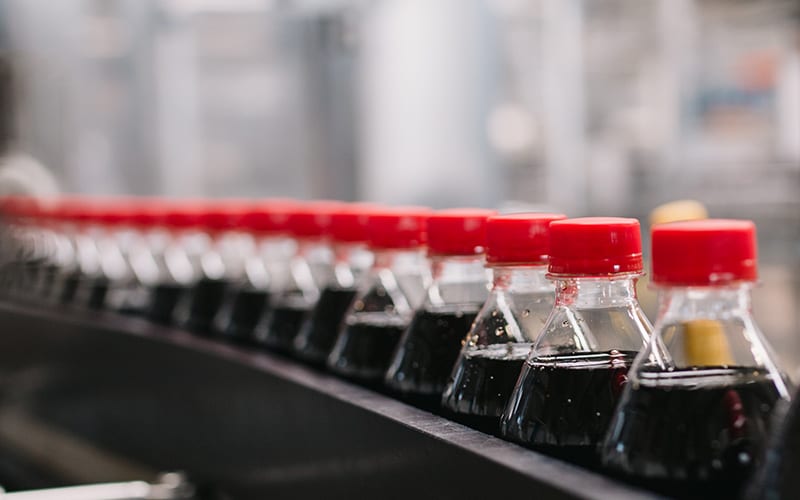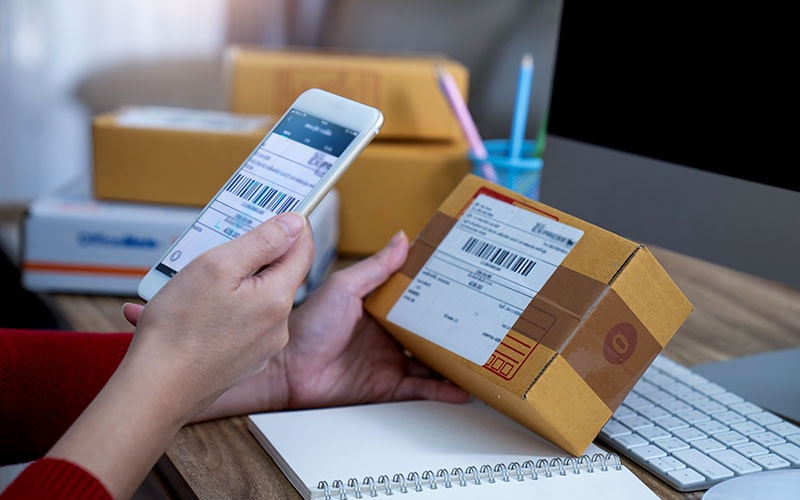Nonessential businesses have been forced to shutter. Customers have moved online. Stocking the shelves of stores that have remained open has created enormous supply chain and logistics challenges. The workforce has been decimated as employees stay home, or risk falling ill. The learning curve for managing newly remote workers has been steep.
These are just the challenges businesses must confront today. But just as important as dealing with the crisis today, is, making plans for tomorrow, and to do so in a competitive and safe way, despite existing in new world full of unknowns.
We believe the actions CPG, retail, and logistics companies must take to deal with both today’s and tomorrow’s challenges will fall into four broad categories: employees, planning, operations, and shopper engagement.
Employees
While workers in many nonessential industries are being laid off or furloughed, essential businesses have needed to hire, train, and manage talent at orders of magnitude. Walmart plans to add 150,000 new staffers1 to its warehouses and stores. Amazon plans to hire 100,000 new delivery and warehouse employees2 in the next few weeks to keep up with the spike in online shopping.
Finding and onboarding all these new employees will be difficult. One way it can be done is to partner with another company, as Kroger, the United States’ largest supermarket by revenue, has done with Sysco, the food marketing and distribution multinational company. Kroger is taking on Sysco workers even as they technically remain in Sysco’s employ,3 helping both companies. Kroger gains the workers it needs to meet demand; Sysco retains the experienced workforce it will need when the pandemic passes.
When (hopefully) all workers return to their jobs, businesses must be ready to deal with a pandemic-engendered sensitivity to health and safety among both returning employees and customers.
CRL companies must add new sanitization cycles and take other measures to protect the shop floor, customers, and employees, and many are doing so now. Supermarkets are wiping down shopping carts and conveyors after each use. CVS and Walgreens have added tables and polycarbonate shields in front of POS stations to create distance and provide protection. Lowe’s store managers now have a mobile app that alerts them through a photographic foot-traffic count when the store has become too crowded. Costco has assigned dedicated social distancing ambassadors to monitor checkout lines, and Kroger is piloting one-way aisles. Employees are demanding health screenings, and Walmart is shipping masks and thermometers to its stores.
It’s not just employee physical health that needs to be secured. The pandemic has taken an emotional toll on everyone, and employee concerns will not simply disappear when the virus is gone. Employers should tell employees what measures are being taken to protect them and offer them guidance on how to protect themselves. This includes drivers, who can be given mobile apps to help them optimize routes while reducing risks, and real-time COVID-19 data to adjust and rationalize the load tendering process.
Planning
The coronavirus pandemic has rewritten most companies’ plans for 2020. Stores and manufacturers have seen demand surge unexpectedly in certain categories and plunge in others. Apparel stores will have to liquidate their spring stock and refresh for … whenever.
Rigorous planning will be critical to emerging from this crisis and thriving in its aftermath. That means increasing the scrutiny given forecasting, including reviewing and adjusting demand models; pulling the plug on algorithms (such as automatic replenishment) designed before the pandemic and out-of-step with current demand patterns; monitoring stock levels and fulfillment; deprioritizing nonessential products; and (in the apparel sector) focusing on fewer sizes.
It helps greatly to establish a command center capable of creating new plans as required
It is advisable to establish a command center that can create new plans as needed and execute them, as Kroger has done. Because the command center must be responsible for both product mix and getting the product on the shelves, it should include the right people: those most involved in these functions, and not simply the most senior executives. And it should include critical suppliers. The command center can enable a company to step up communications with suppliers and carriers throughout the supply chain, ensuring the right orders get the right attention.
Operations
The coronavirus infection has caused a surge in online purchasing, resulting in a crunch in last-mile deliveries (even as the LTL sector has seen a significant drop). The cost to hire a last-mile truck has jumped 6% since February, and rates have risen on 63 of the United States’ 100 highest-volume truck routes.4 Consequently, retailers will need to manage last-mile logistics for home delivery or remote pick-ups, while LTL providers may, where possible, switch to last-mile delivery.
Carriers should strengthen their value-added offerings (integrated shipment, customs clearance, documentation support, etc.) to attract new customers and improve their standing with old ones, while generating new revenue by expanding into the freight forwarder space. Adding these capabilities depends upon strengthening existing alliances and partnerships with ports, terminals, and warehousing facilities to get preferred berths and related services.
It also demands agility. For example, logistics firm Share Mobility is refocusing its passenger transportation network to move freight. The Ohio-based company, created to connect groups traveling to schools and other public institutions, is now using its software to help distributors and transportation companies deliver groceries, medicines, and other health supplies — in other words, it is doing well by doing good.5
Being able to offer these services depends upon good end-to-end visibility of the entire supply chain. This begins by leveraging real-time data supported by advanced technologies — such as the Internet of Things — that promote fast response times. These technologies work best when data silos are reduced and a common set of processes, data, and interface standards are embraced.
Shopper engagement
On Friday, March 13, online sales at general merchandise retailers jumped 50% compared with that date a year ago. By the end of the following week, physical traffic in U.S. stores had fallen 58%, and in apparel stores that number was 78.9%.6
People were already moving online; the coronavirus simply accelerated it. But this rapid shift makes it critical for companies to understand that they must think differently and innovatively to connect to their customers.
For one thing, it is becoming obvious that traditional marketing messaging is not just obsolete, it is a turnoff. A recent survey by Edelman found that 84% of consumers wanted the brands with which they transact to facilitate a sense of community via social media and offer support to those in need. And while the pandemic lasts, 90% want those brands “to do everything they can to protect the well-being and financial security of their employees and suppliers.” They are not looking for lighthearted brand messaging.7 What companies should hear in these data is that their communications should be serious, empathetic, and truthful. And, due to the always-on, always-connected nature of the online world, they should be continuous.
Traditional marketing messaging is not just obsolete, it is a turnoff
Companies should use all digital channels: social media, SMS, video, and one-to-one video appointments. Numerous brands have begun organizing online social experiences, leveraging social commerce while providing customers the help they want, need, and demand.
For example, Dial Soap has been emphasizing the CDC’s recommendations for hand-washing in its online ads. Not coincidentally, its day-over-day ad impressions are up 25% on YouTube and almost 30% on Instagram.8 In another example of good synergy, ShopRite Supermarkets is offering consultations with the company’s dietitians on its website.9 And Barry’s, the fitness and lifestyle brand, is offering free live workout sessions over Instagram Live.10
The services these companies are providing online strengthen their connections with their customers; American Express and United Airlines are listening to what their customers want from all businesses. AmEx is matching charitable donations made by its cardholders to Feeding America, and United is matching the miles donated by its loyalty members to charities directly involved in COVID-19 relief efforts.11
All this online commercial activity — added to the rise in remote working — creates security vulnerabilities that companies must address by making sure their firewalls are up to snuff. Their remote workers should have access to VPNs, ideally by employees taking their desktop computers home (if still possible). Companies can move files to the cloud so the network needn’t be accessed. Threat monitoring should be prioritized, and potential online scams should be cataloged and screened for.
Witnessing and participating in the birth of tomorrow
All these activities — creating new and safer workplaces for employees and customers; planning for the post-pandemic environment as well as for today’s; adjusting operations and gaining full supply chain visibility; and creating tighter (and more digital) connections between companies and their customers — will help CRL companies cope not only with today’s challenges but prepare them for tomorrow’s.
These are difficult days, but they come with opportunities to invest in the people and processes that make businesses great.
References
- NPR, “Walmart Plans Bonuses for Workers, 150,000 Temporary Hires”
- NPR, “Amazon To Hire 100,000 Workers to Meet ‘Surge in Demand”
- The Motley Fool, “Kroger to Accept Furloughed Sysco Employees as Temporary Workers”
- Wired, “As Covid-19 Spreads, Truckers Need to Keep on Trucking”
- DC Velocity, “Logistics tech firms bolster last-mile sector straining under coronavirus demands”
- Wall Street Journal, “Coronavirus Crisis Reveal Retail Have and Have-Nots”
- Edelman, “Trust Barometer Special Report: Brand Trust and the Coronavirus Pandemic”
- AdAge, “7 Brands That Have Increased Social Media Spend During the Coronavirus Epidemic”
- Grocery Dive, “ShopRite offers customers virtual access to dieticians”
- CNBC, “Boutique fitness studios are going digital during coronavirus pandemic, but they’re not making money yet”
- CNBC, “AmEx and United will match your donated points and miles to help coronavirus relief efforts”





